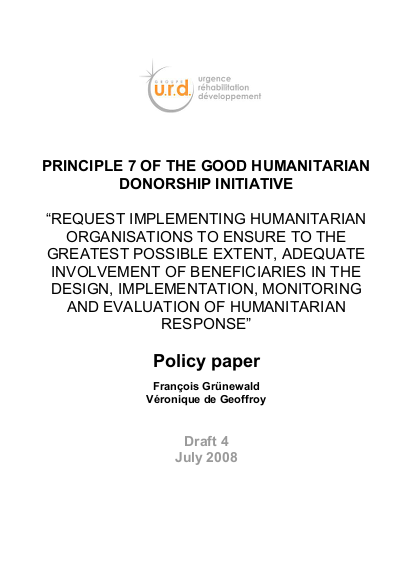
Most evaluations show that “populations in distress” do not remain passive when their survival is at stake. Several studies have highlighted the positive effects of increased participation by local people, which include more accurate analyses, more suitable programming, more effective implementation and increased accountability in project cycle management. And yet, achieving this kind of added value is one of the most difficult challenges for humanitarian operations. Broadly referred to as participation, it is often cited as a critical point in existing codes, tools and methods (the Code of Conduct for the International Red Cross Movement and NGOs in Disaster Relief, The ALNAP Practitioner’s Handbook, the SPHERE Project, the Quality COMPAS, the Do No Harm project, etc) and in many donor guidelines for proposal preparation. Unfortunately, participation is rarely applied in practice, despite its widely acknowledged importance and many statements of intent. Most of the recent evaluations, including the Tsunami Evaluation Coalition (TEC) and others, underlined that it is still only used peripherally during operations. That the GHDI encourages donors to promote participation as it does in principle 7 is testimony to how important this issue has become. But do current conditions make it possible for humanitarian organizations to “ensure to the greatest possible extent, adequate involvement of beneficiaries in the design, implementation, monitoring and evaluation of humanitarian response”?
